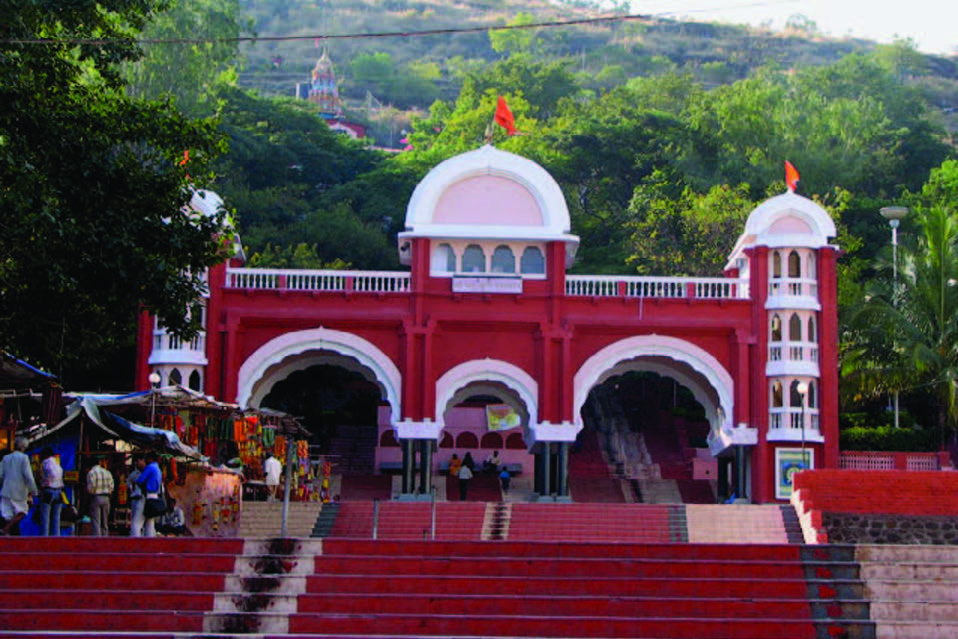
Chaturshringi Temple (Above)
History: Built during the reign of the Chhatrapati Shivaji Raje Bhosle, the Chaturshringi Temple derives its name from a mountain with four peaks (Chatur means four). The premises also houses temples dedicated to Goddess Durga and Lord Ganesh – which includes eight miniature idols of Ashtavinayaka. These small temples are located on the four separate hillocks. The legend associated with Chaturshringi Temple has that a rich and prosperous merchant, Durlabhsheth Pitambardas Mahajan, an ardent believer in Goddess Chaturshringi had this temple built on the direction of the Goddess herself. Being a devout follower he had visited her temples located at various places but as he grew older he could no longer travel. It was then that the Goddess Chaturshringi appeared in his dream one night and told him, that if he could not travel to her she would instead opt to come stay near him. She directed him to have a mountain situated in the North West side of Pune dug up. On digging at the designated place a natural statue or a swayambhu idol of the goddess was found and a temple was built there.
To see: Open daily from 6 am to 11pm.
Shaniwarwada
History: The foundation stone of one of the most historically significant places in Pune was laid in the year 1730 on a Saturday which gave it the name Shaniwarwada as Shaniwar is Saturday in Hindi and wada is a place you stay at. Today, little remains of the original structure that comprised of additions made over years to this seat of Peshwa rulers of the Maratha Empire. A great fire in 1827, that lasted for a full seven days, gutted everything except heavy granite ramparts, strong teak gateways and deep foundations. One can see five gates here, namely Dilli Darwaza, the main gate of the complex, the Mastani Darwaja, Khidki Darwaja, Ganesh Darwaja, and Jambhul Darwaja.
Superstition attached: Many believe that the place is haunted because of the brutal assassination of the 13-year-old Peshwa heir. Many claim to still hear him crying for help on full moon nights.
To see: Light and sound show that depicts the story of the fort (7 pm daily).
Aga Khan Palace
History: Spread across an area of 19 acres, the Aga Khan Palace is a combination of Muslim and French architecture and has Italianate arches surrounded by well-laid out sprawling lawns and gardens. This landmark was built in 1892 by Sultan Muhammed Shah Aga Khan III who got it constructed to help the poor people in the neighbouring areas of Pune who had been drastically hit by famine. It was here that eminent freedom fighters such as Mahatma Gandhi, his wife Kasturba, Mahadevbhai Desai and Sarojini Naidu were interned or held as prisoners during the freedom struggle. Various things used by Mahatama Gandhi such as his writing desk, his bed and Kasturba Gandhi’s sari, clothes and footwear have been preserved in this monument that has pictures of the Indian struggle for independence adorning its walls. This is also the place where Kasturba Gandhi and Mahadevbhai breathed their last. Highlight: Mahatma Gandhi was held prisoner here.
To see: Open daily from 9 am to 5.30 pm.


Be the first to comment